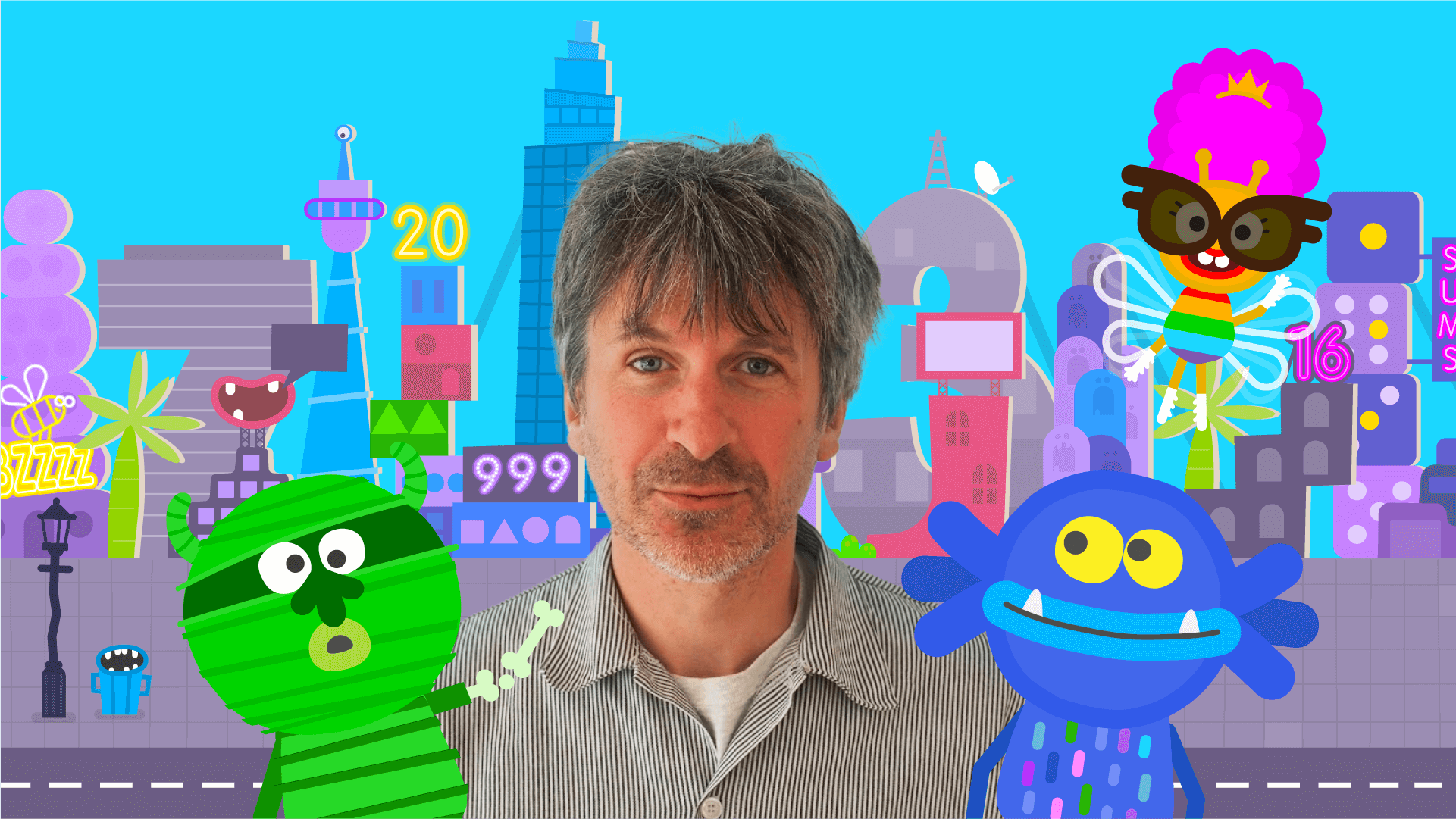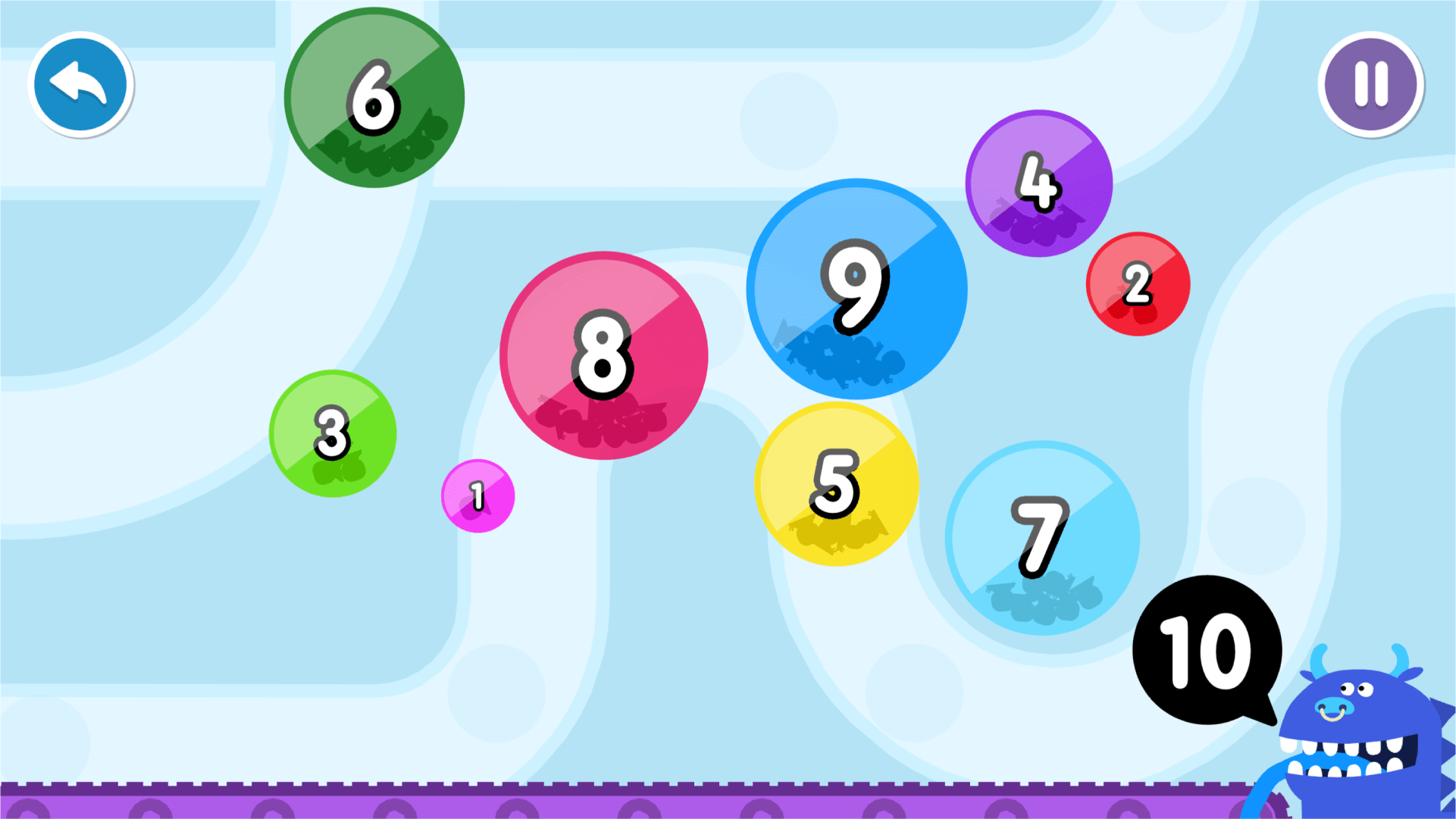Behind-the-scenes with Number Skills Game Designer and Developer Matt Sayers
(5 minute read)

In this behind-the-scenes, we caught up with Game Designer and Developer Matt Sayers. Matt has been with Teach Your Monster for over four years, working on many of our apps and games. With a particular focus on Number Skills, we asked Matt a few questions about him, his work with us and his work on the development of Number Skills into the great game it is today!
Who are you and what do you do?
I’m an interactive developer based in Brighton on the (currently) sunny south coast of the UK, and have worked in games and e-learning for the past twenty-something years, primarily in the children’s entertainment and education sector. I used to work purely on web-based projects, for clients such as CBeebies, CBBC, Nickelodeon and Cartoon Network.
How did you get started as a game designer/developer?
I started working in website design in the 90s, and then a software called Flash emerged, which, at the time, opened up the web to a world of fun and interactivity that hadn’t previously been possible. It also provided me with a route into programming in a very visual and creative way, which very much appealed as I didn’t have a traditional computer science background.
What do you do at Teach Your Monster?
I work on designing and developing our games and apps, covering pretty much all aspects of the user-facing experience, from making nice bouncy bubbles, fun interactions and entertaining animations, to ensuring the less glamorous but equally important things like user login and saving game data functions correctly.
What do you like most about the job? What is hard about it?
Things I love:
- The creativity and satisfaction of creating fun things for kids to play with that are not only enjoyable but also help them to learn really important foundational skills that will help them throughout their lives.
- The fact that the educational aspect is a fundamental cornerstone of the game design, rather than being simply tacked on to a standard video game.
- Similarly, working for a not-for-profit organisation where success is determined primarily by the educational impact of the products, rather than the financial success and growth of the company (although this obviously also counts if we want to continue making impact!)
Things that are hard:
- The technical challenge of ensuring everything works for all our products and users across all the platforms we support (Apple, Android, Amazon devices, as well as the web) is hard to keep up with, especially as we are a small and creatively focused team. We are constantly trying to add new features and content while ensuring that users on older versions are not left behind.
- We also have to consider the age and motor skills of our target age range. Things that most game developers take for granted such as being able to use a mouse to drag and drop things on the screen, or text-based feedback and instructions, are often not appropriate techniques for us to use.
What is the process of creating a mini-game, and how are you involved? Who else is involved?
Before we do anything else, we talk to teachers and educational experts about what the key concepts are in a subject and how they teach them in the classroom, particularly any physical games and activities they might use to help communicate and test these concepts.
We then design interactions, activities, and games to achieve all the above in a way that is also intuitive and easy to use for children of the target age range, without requiring constant assistance from an adult (although we also encourage children to play along with their grown-ups). We start off with simple prototypes and test them in classrooms before developing them into fully-functioning, beautiful-looking games.
Can you explain how you’ve improved a mini-game and why?
We are constantly testing our games and responding to feedback from teachers, experts and the children themselves.
For example, in Number Skills, there is a game where the child helps their monster, who is dangling by its feet, pick up the correct number of items and drop them down a hole (the Claw game). This was good fun, but some children found it confusing, as once you’d put too many things in the hole, there was no way to correct your mistake without pulling the lever to submit your incorrect answer.

So we made it possible to remove items from the hole before submitting your answer, which was also fun and very intuitive for some users but was deemed by our experts to be potentially confusing and too advanced a concept for that stage of the game.
So we ended up just giving the ‘incorrect’ feedback as soon as they’d dropped too many items in the hole, and reset the level so they could try again - which, based on our analytics data, has resulted in less frustration and greater engagement with the game.
Out of all the things you've worked on at Teach Your Monster, what are you most proud of?

On a personal level, I’m really pleased with how the Bubbles game in Number Skills turned out, as a fun way of composing and decomposing numbers in a very intuitive way.
As part of the Teach Your Monster organisation, the sheer number of children who have played and enjoyed our games, whilst at the same time benefiting from our educational approach, is just amazing!